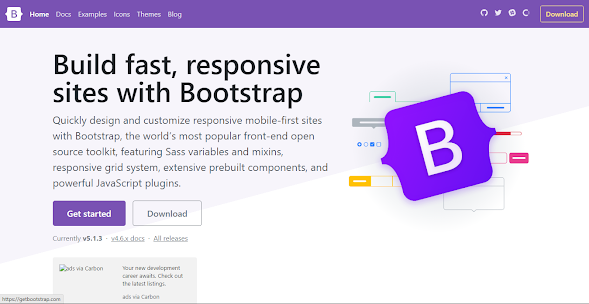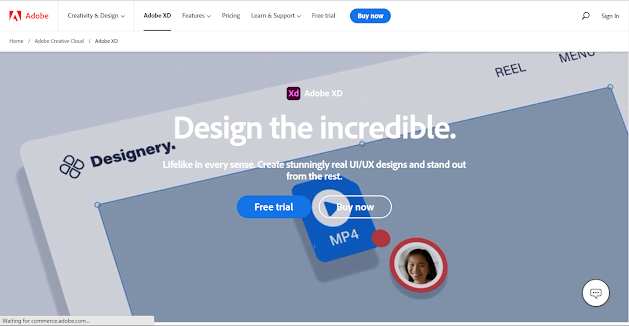Building a website either from scratch (coding) or using website building software's can be overwhelming if your new to web design and just starting out developing websites. Most people get frustrated in choosing the right website-building software to suit their needs. So how can you know the best website building software to use to create your website?
In this article, we will walk through the best free and paid website building software that has been in existence and has helped many. Even if you're a total beginner at creating websites you will get a good bang for it.
Sometimes, depending on your goal, you may need to use more than one software to achieve the best website design but most of the software provides you with the functionalities you need to accomplish your purpose.
To help you find what you’re looking for, we’ve put together a list of the best web design software tools for building websites, interface design, and prototyping as these are what you need to develop a complete website.
The Best Building Website Software's
combination of flexibility, power, and ease of use necessary to build and launch websites is what constitutes the best website building software.
Best Software for Website Creation
1. WordPress (Free and Paid)
Why WordPress?
Over 35% of all the websites on the internet run on WordPress. Popular blogs, e-commerce stores, communities, and more are using WordPress.
This is because WordPress offers the best combination of flexibility, power, and ease of use necessary to build and launch content-based websites.
To get started with WordPress, you have two options:
- Set up a self-hosted WordPress site (WordPress.org)
- Sign up for a free WordPress.com account
If you’re just looking to host a small personal site, WordPress.com may be a great choice. However, if you’re starting a more complex project a self-hosted WordPress site is probably a better option.
You might be using WordPress already, but looking for help creating a WordPress theme or customizing WordPress pages, we recommend checking out the Genesis Theme Framework and the Elementor Page Builder.
2. Bootstrap (Free)
Bootstrap was created by Twitter's engineering team. And is now the world’s most popular framework for building responsive, mobile-first websites.
Let's see why. Bootstrap is a free library of HTML, CSS, and JavaScript that simplifies the process of coding a website from scratch. Bootstrap offers dozens of features like a grid system, responsive breakpoints, and a large library of components that make coding a website quick and easy.
Each feature is documented very well, complete with examples and suggestions for customization.
To get started with Bootstrap, download the latest version of the Bootstrap framework, copy one of the example templates, and start coding.
3. Wix (Free and Paid)
An alternative to WordPress is Wix.
Much like WordPress, Wix can be used to create a variety of different sites, including blogs and stores. Through its drag-and-drop editor, Wix makes it simple to set up and launch your site in just a few minutes.
4. Dreamweaver (Free Trial)
Dreamweaver is Adobe’s application for coding, editing, and maintaining websites. You can either edit websites by coding them manually or through an intuitive visual interface.
Dreamweaver has many features of a traditional, text-based Integrated Development Environment (IDE) i.e syntax-highlighting, automatic code completion, and the ability to collapse and expand sections of code. Also, Dreamweaver can be used with Bootstrap!
Dreamweaver’s visual interface is what makes it really stand out, unlike traditional IDEs. Any changes you make in your website’s code are automatically displayed in real-time, and you can also point and click to edit your website’s code visually.
Dreamweaver is a great option if you need more than just a code IDE only and more than a simple drag and drop editor.
After the free trial, you will need to subscribe if you want to continue using the DreamWeaver.
5. Squarespace (Paid)
Squarespace is another good website builder that serves as a third alternative to Wix and WordPress.
Much like Wix, Squarespace offers an intuitive drag-and-drop interface for creating your website. Squarespace also offers a huge variety of different themes and color customizations and includes many of the standards you’d expect like SSL encryption and the ability to build an online store.
Best Software for Interface Design & Prototyping
Interface design apps and prototyping tools help designers to have a vision and communicate how websites will look and behave before they’re launched. Here are candidates to consider.
6. Figma (Free and Paid)
Despite being one of the newest tools on this list, Figma is also one of the most powerful.
Much like Sketch, the next app on this list, Figma features an intuitive, vector-based interface that makes designing websites simple. Anything you can do with Sketch or Adobe XD, you can also do with Figma.
What makes Figma really shine, however, is its collaborative, cloud-based approach. With Figma, multiple team members can edit a design file simultaneously. Business stakeholders can also leave comments, and developers can copy code snippets to simplify the process of turning your design into a real site.
Figma offers a free plan that includes up to 3 projects. Paid plans start at $12 per month and include advanced options like custom user permissions.
7. Sketch 3 (Free Trial)
Extremely popular interface design tool which focuses on simplifying the process of creating beautiful, high-fidelity mockups. Sketch gained popularity in the early 2010s when it won a design award from Apple.
Designers love Sketch because its uncluttered and intuitive interface makes it easy to create beautiful designs quickly, without the steep learning curve often associated with other design tools. Sketch also has a comprehensive ecosystem of plugins and integrations that bring added power and make it simple to integrate Sketch into your workflow.
While Sketch has recently added some features focused on prototyping and collaboration, the program isn’t as advanced in these areas as some of the other tools on this list.
The sketch is available for macOS and costs $9 per editor, monthly (or $99 per editor, annually). The sketch comes with a 30-day trial. Get it here
8. Adobe XD (Free Trial)
XD is a powerful, vector-based tool that also supports prototyping animations. If you like Adobe’s other products like Photoshop and Illustrator, chances are you’ll also like XD.
The program also supports opening and editing files from Sketch, making it a popular choice for Windows users who need to collaborate with other designers who use Sketch. That said, novices may find XD’s learning curve a bit steep, and even many professionals prefer other tools on this list. Get started here
9. InVision Studio (Free and Paid)

While InVision got its start offering a cloud-based prototype service that integrates with tools like Sketch and Photoshop, it now offers its own full-featured interface design and prototyping tool called Studio.
Think of InVision Studio as an advanced version of Sketch, complete with advanced motion animations, collaboration tools, and options to create and share prototypes.
InVision Studio is currently in free beta. To share prototypes using its cloud service, you can opt for a free plan or upgrade to one of InVision’s paid offerings, which allows for more collaborators and projects.
10. Framer X (Free Trial)
Originally started as a JavaScript library and toolset for prototyping, it’s evolved into the most powerful tool on this list.
It is a rapid prototyping tool that supports complex animations and generates the code for React components on the fly. At first glance, Framer’s vector-based interface looks extremely similar to Sketch, but there’s far more power under the hood.
Designers like Framer for its responsive design features, an array of premade components, and support for advanced animations. Developers love it because it simplifies the process of turning a design into production-ready code.
If you’re already part of the React ecosystem, or if you simply want a powerful interface capable of creating high-fidelity prototypes with realistic interactions and animations, Framer X is a fantastic option.
Framer X offers a free plan for up to two editors. Framer’s paid plans start from $20/month.
To Sum Up: The Best Building Website Software's
Wow, you’ve reached the end of the list!
All of the abovementioned tools can help you be more productive and creative at the same time. However, it’s important to check the software’s features to see if it fulfills your web design project requirements.
See more articles from BuildSite.
Which web design software do you use? Comment below!

.jpg)











0 Comments